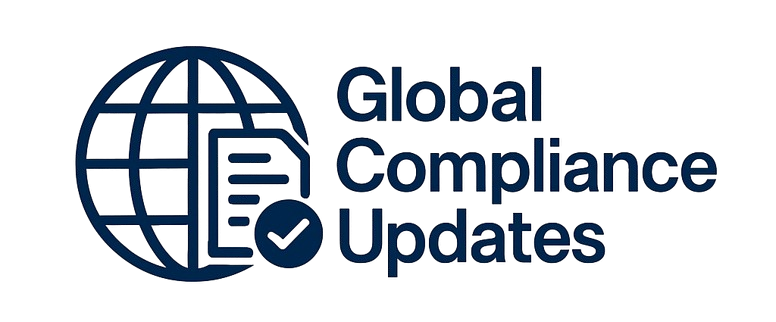The corporate board of directors is a group of well-meaning, part-time amateurs, trying to monitor, control and assure the work of the full-time professional managers who actually run the corporation. That means at best, your board will be several steps behind in having an accurate, current, complete insight into the company, its operations, its finances, and its dangers. At worst, you could, sometime in the future, find yourself giving a deposition trying to prove that you never noticed something regulators, attorneys, and shareholders in retrospect say should have been obvious.
The best practice board must have effective financial and operational controls. Unfortunately, most internal controls are set up for the use of financial, compliance, legal or other staff… and not the board. Our program looks at how your board should structure itself for effective risk oversight; where hidden dangers are most often found; internal risks the board must watch for; and how to shape reporting and corporate controls that give you the info you need, when you need it.
WHY SHOULD YOU ATTEND?
From financial crises, to corporate scandals, to pandemics, to "black swan" dangers, the past decade has seen too many of the world's companies shocked by risks and exposures. Yet the board’s independent directors face many risk oversight obstacles. They spend too little time in the workings of the company… management has many incentives to assure boards that everything is fine… the information directors see is often stale, limited, or hard to follow… and vital corporate financial and operational controls are designed for the use of managers (not the board). How can your board build effective risk management oversight into its skills?
AREA COVERED
- How does the board assure systems that give them good risk oversight?
- Shaping a board-based risk assessment process.
- How good is the risk intelligence management gives you?
- What are “key risk indicators” for your business?
- Dangers from your employees and systems.
- Designing corporate controls that are “board friendly.”
- Outside risks – partners, suppliers and tough new anti-corruption laws.
- The new world of IT risk, and the board oversight role.
- Are some of your biggest risks sitting around the board table?
LEARNING OBJECTIVES
- Role of the board in company risk management
- Structuring board/board committees for risk oversight
- Specific risk areas boards must monitor
- The corporate financial, legal, operational control information that boards work with
- How “corporate controls” can be made more board usable
- How boards and directors can shape their own corporate monitoring tools
WHO WILL BENEFIT?
- Corporate board members
- Nonprofit corporate leaders
- Private and family firm board members
- Corporate secretaries.
- Corporate counsel
- Venture capital and private equity partners.
From financial crises, to corporate scandals, to pandemics, to "black swan" dangers, the past decade has seen too many of the world's companies shocked by risks and exposures. Yet the board’s independent directors face many risk oversight obstacles. They spend too little time in the workings of the company… management has many incentives to assure boards that everything is fine… the information directors see is often stale, limited, or hard to follow… and vital corporate financial and operational controls are designed for the use of managers (not the board). How can your board build effective risk management oversight into its skills?
- How does the board assure systems that give them good risk oversight?
- Shaping a board-based risk assessment process.
- How good is the risk intelligence management gives you?
- What are “key risk indicators” for your business?
- Dangers from your employees and systems.
- Designing corporate controls that are “board friendly.”
- Outside risks – partners, suppliers and tough new anti-corruption laws.
- The new world of IT risk, and the board oversight role.
- Are some of your biggest risks sitting around the board table?
- Role of the board in company risk management
- Structuring board/board committees for risk oversight
- Specific risk areas boards must monitor
- The corporate financial, legal, operational control information that boards work with
- How “corporate controls” can be made more board usable
- How boards and directors can shape their own corporate monitoring tools
- Corporate board members
- Nonprofit corporate leaders
- Private and family firm board members
- Corporate secretaries.
- Corporate counsel
- Venture capital and private equity partners.
Speaker Profile
 Ralph Ward
Ralph Ward
Ralph Ward is an internationally-recognized speaker, writer, and advisor on the role of boards of directors, how “benchmark” boards excel, setting personal boardroom goals, and the future of governance worldwide. Ward is publisher of the online newsletter Boardroom INSIDER, the worldwide source for practical, first-hand tips for better boards and directors (www.boardroominsider.com). He also edits The Corporate Board magazine (www.corporateboard.com) the nation's leading corporate governance journal, with subscribers who are directors and senior officers across the U.S. and in 27 foreign countries.He is author of six acclaimed books on board and governance for today’s corporate boards, the challenges …
Upcoming Webinars

ChatGPT and Project Management: Leveraging AI for Project M…

Workplace Investigations 101: How to Conduct your Investiga…

Project Management for administrative professionals

The Monte Carlo Simulations in Excel for Risky Investments

Onboarding is NOT Orientation - How to Improve the New Empl…

Dealing With Difficult People: At Work & In Life

Transform Data into Insights: A Beginners Guide to Excel Pi…

Construction Lending And Real Credit Administration: Evalua…

Understanding Accounting for non - Accounting professionals

Harassment, Bullying, Gossip, Confrontational and Disruptiv…

New Form 1099 Reporting Requirements: 2025 Compliance Update

Human Error Reduction Techniques for Floor Supervisors

HR Metrics and Analytics 2025 - Update on Strategic Plannin…

Treating Employees Like Adults: Discipline versus Empowerme…

7 Ways To Beat Burnout: Without Quitting Your Job


How to Write Procedures to Avoid Human Errors

Handbook Overhaul 2026: Compliance, OBBB Act & Beyond

FDA Proposes Framework to Advance Credibility of AI Models

Ethical Terminations: Navigating Employee Exits with Legal …

Understanding EBITDA – Definition, Formula & Calculation

Project Management for Non-Project Managers - Scheduling yo…

4-Hour Virtual Seminar on Hidden Secrets of Selling & Marke…

Validation Statistics for Non-Statisticians

Data Integrity and Privacy: Compliance with 21 CFR Part 11,…


The Alphabet Soup: When the FMLA, ADA, COBRA, and Workers' …

Talent Management: How to Leverage AI and ChatGPT Tools for…


Offboarding with Care: Conducting Legal & Ethical Employee …

2-Hour Virtual Seminar on How to Conduct an Internal Harass…

Payments Fraud Detect & Prevent Check, ACH and P-Card Schem…

Managing Toxic & Other Employees Who have Attitude Issues



Reduce Stress in the Workplace: Effective Ways to Handle Co…





Excel - Pivot Tables - The Key To Modern Data Analysis and …
